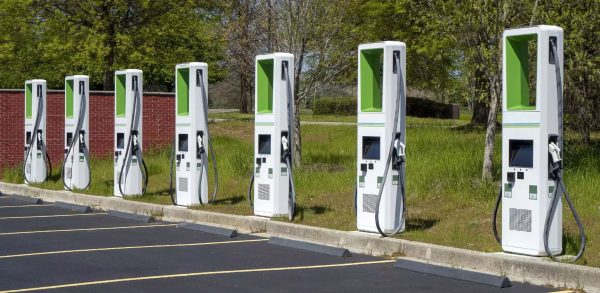In an exciting development for the electric vehicle (EV) industry, seven major automakers, including Ford, BMW, and Volkswagen, have recently unveiled their plans to establish a groundbreaking electric vehicle charging network named Electrify America.

This ambitious initiative aims to compete head-on with Tesla’s Supercharger network and address one of the most significant hurdles in the widespread adoption of EVs: the lack of charging infrastructure. In this article, we will delve into the details of the Electrify America network, its potential impact on the EV market, and explore how businesses and individuals can plan their own EV charging stations to be part of this transformative movement.
The Electrify America Network
The Electrify America network is poised to revolutionize the EV charging landscape in the United States. With an initial plan to deploy 2,000 fast-charging stations across the nation, it promises to offer an extensive and convenient charging network for all EV drivers, not just owners of specific brands like Tesla. This inclusivity is expected to accelerate the transition to electric vehicles, as it removes a major barrier for potential buyers worried about charging accessibility.
Seven multinational automakers — BMW (BMWYY), GM (GM), Honda, (HMC), Hyundai (HYMTF), Kia, Mercedes-Benz Group (MBGAF), and Stellantis (STLA) — announced on Wednesday that they will form a new charging network that they say will “significantly expand access to high-powered charging” in North America.
The funding for the Electrify America network comes from a monumental $2 billion settlement paid by Volkswagen following its diesel emissions scandal. The network’s establishment is projected to be fully operational by 2025, which is a significant milestone for the EV industry and a clear signal of the automakers’ commitment to sustainable transportation.
Driving the EV Revolution Forward
The announcement of Electrify America and the collective efforts of the seven major automakers represent a significant stride toward shaping the future of transportation. The demand for EVs in the United States has been skyrocketing, with a remarkable 87% increase in EV sales in 2022 alone. This growth trend is anticipated to continue as more consumers become environmentally conscious and seek alternatives to traditional internal combustion engine vehicles.
With the proliferation of the Electrify America charging network, the convenience and accessibility of EV charging will be unparalleled. As a result, we can anticipate a surge in EV adoption rates, further fueling the industry’s momentum and driving the transition towards sustainable transportation solutions.
Planning Your EV Charging Station
As the EV revolution gains momentum, many businesses and individuals are considering installing their EV charging stations. Doing so not only demonstrates a commitment to sustainability but also opens up new revenue streams and attracts eco-conscious customers. Here’s a step-by-step guide to help you plan your EV charging station effectively:
1. Choose the Type of Charging Station
The first step is to decide on the type of EV charging station you want to install. There are two main options to consider: Level 2 chargers and DC fast chargers. Level 2 chargers are slower but less expensive, making them an excellent choice for businesses and locations where cars are parked for an extended period. On the other hand, DC fast chargers are faster and ideal for high-traffic areas where quick charging is crucial.
2. Find the Perfect Location
The success of your EV charging station depends significantly on its location. It should be easily accessible to EV drivers and strategically placed to attract potential customers. High-traffic areas such as shopping centers, restaurants, and public parking lots are excellent choices. Additionally, consider proximity to major highways and popular destinations to cater to long-distance travelers.
3. Ensure Access to Sufficient Power
An EV charging station requires a stable and ample power supply to deliver an optimal charging experience. Work with a qualified electrician to ensure that your chosen location can handle the electricity demands of the charging station. Investing in a robust power infrastructure will help you avoid potential issues and provide a reliable service to your customers.
4. Obtain the Necessary Permits and Approvals
Before installing your EV charging station, you must obtain the required permits and approvals from local authorities and regulatory bodies. Permitting requirements may vary from state to state, so it’s essential to research and comply with all relevant regulations. This step is crucial to ensure a smooth and lawful operation of your charging station.
The Future of EV Charging Stations
The future of EV charging stations is undeniably promising. With the EV market projected to grow exponentially, the demand for charging infrastructure will follow suit. Industry experts predict that the United States will boast over 500,000 charging stations by 2030, making electric vehicles even more viable and convenient for the masses.
Furthermore, advancements in EV technologies will play a pivotal role in shaping the future of charging stations. As EVs continue to evolve, offering longer driving ranges on a single charge, the need for high-powered DC fast chargers may decrease. This trend will lead to more widespread adoption of Level 2 chargers, catering to a broader spectrum of EV owners.
This way, the announcement of the Electrify America network by seven major automakers marks a defining moment in the evolution of the EV industry. This initiative promises to rival Tesla’s Supercharger network and pave the way for widespread EV adoption across the United States. As individuals and businesses plan their own EV charging stations, they contribute to the growth of a sustainable transportation ecosystem and support the vision of a cleaner, greener future.




